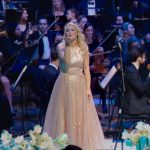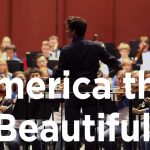Franz Schubert: Mass No. 2 in G Major, D. 167
UC Davis Symphony Orchestra and University Chorus
Jeffrey Thomas, conductor
Mira Huang, soprano
Shelley Foster, soprano
Karen Combs, mezzo-soprano
Lorenzo Ramsey, tenor
William Jiang, baritone
February 3, 2018
Jackson Hall, Mondavi Center for the Performing Arts
University of California, Davis
Recording Engineer: Stephen Bingen
Audio Assistant: Micah Lesch
Camera Operator: Ava Hagwood
Director of Photography: Stephen Bingen
Franz Schubert’s Mass No. 2 in G Major, D. 167 is one of his earliest sacred works, composed in March 1815 when he was just eighteen years old. Despite his youth, the piece shows remarkable clarity, elegance, and melodic charm. Unlike some of his later, more expansive masses, this setting is relatively short and concise, lasting about twenty-five minutes. Its modest scoring and accessible style suggest it was intended for practical liturgical use, reflecting Schubert’s duties as a composer and teacher in Vienna at the time.
The mass is written for soprano, tenor, and bass soloists, a four-part mixed choir, strings, and organ continuo. There are no wind instruments or elaborate orchestration, which contributes to the intimate and transparent texture of the work. Schubert relies on graceful melodic lines and simple harmonic progressions rather than dramatic contrasts, giving the mass a lyrical, devotional character. The soprano solo, in particular, often rises above the texture with an angelic quality that foreshadows Schubert’s gift for writing for the voice.
One of the striking features of the Mass in G is its balance between traditional liturgical restraint and Schubert’s natural inclination toward expressive lyricism. While the piece adheres to the formal divisions of the Ordinary of the Mass—Kyrie, Gloria, Credo, Sanctus, Benedictus, and Agnus Dei—Schubert often condenses or simplifies the text. This has led some scholars to suggest that he aimed for a more practical, devotional piece rather than a grand concert work. The result is a sense of intimacy and immediacy, as though the music is intended to speak directly to the heart rather than overwhelm with grandeur.
The Mass No. 2 in G Major remains one of Schubert’s most frequently performed sacred works. Its combination of simplicity, beauty, and youthful sincerity has made it especially popular with choirs, both amateur and professional. Though written quickly—reportedly within a single week—it demonstrates Schubert’s instinctive melodic gift and his ability to imbue even modest forms with emotional depth. Today, it continues to be cherished as a luminous example of early Romantic sacred music, radiating a quiet, humble spirituality.







